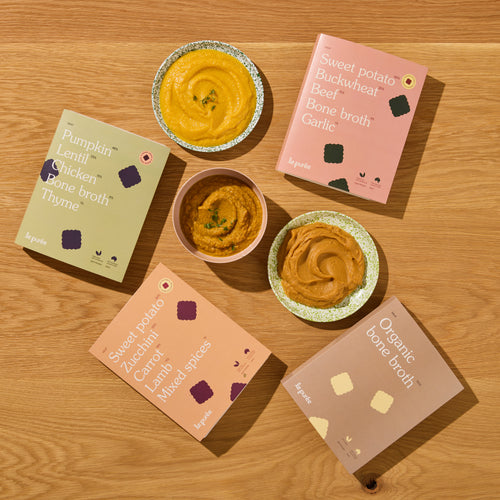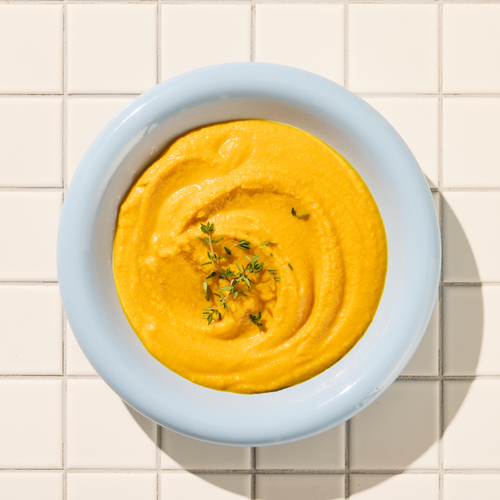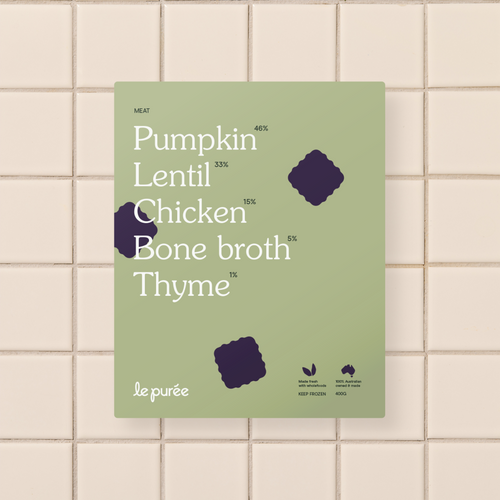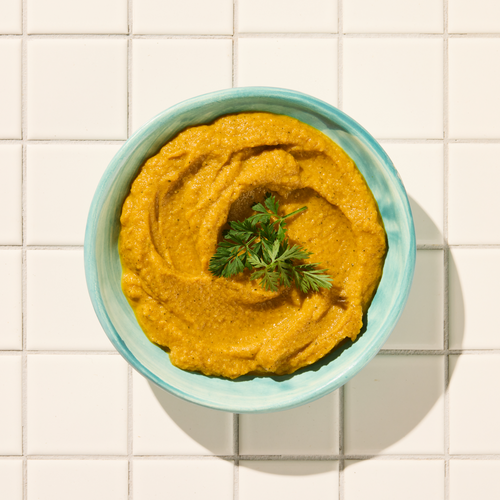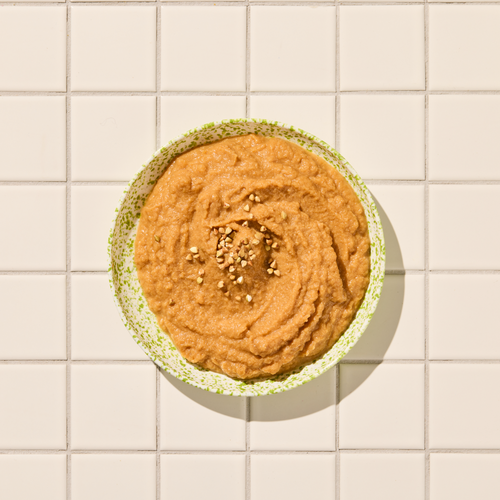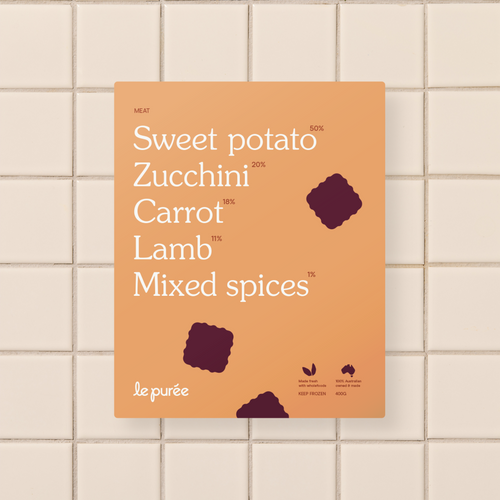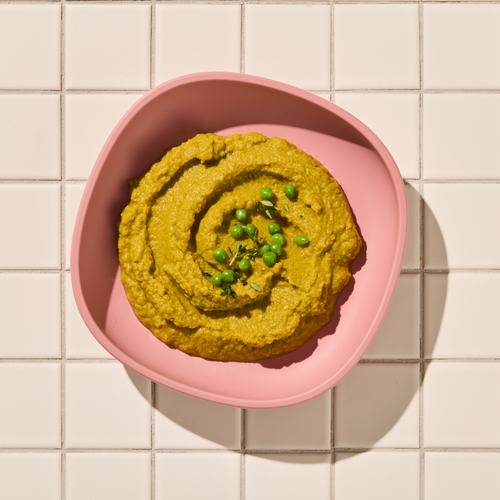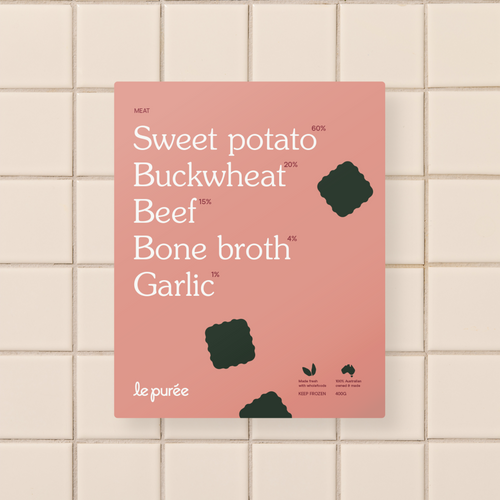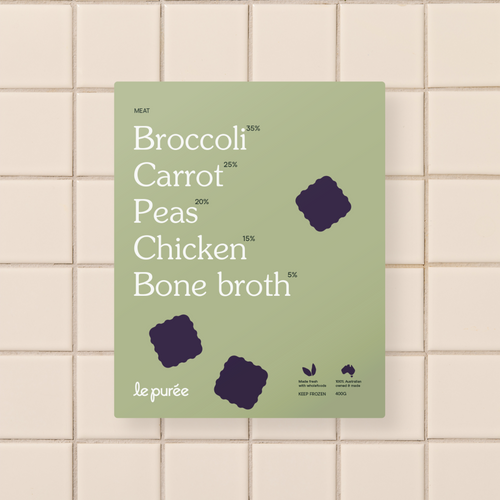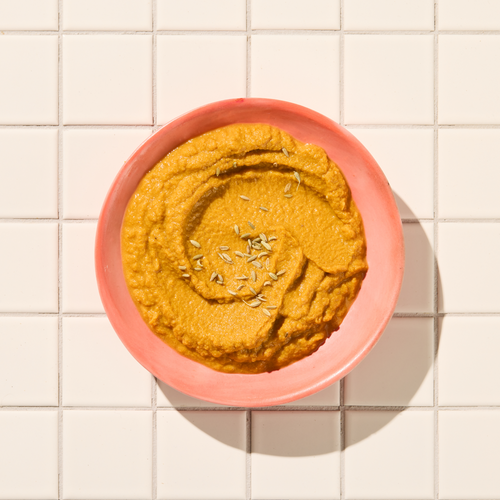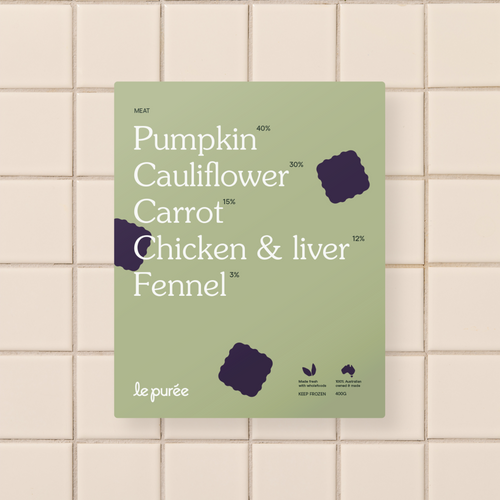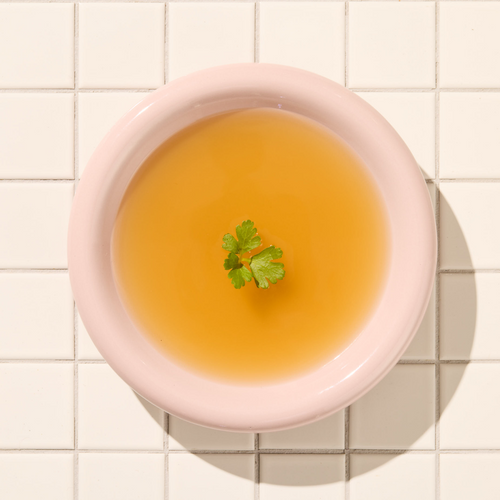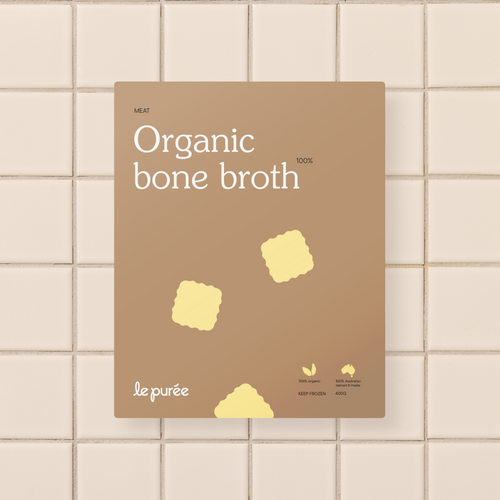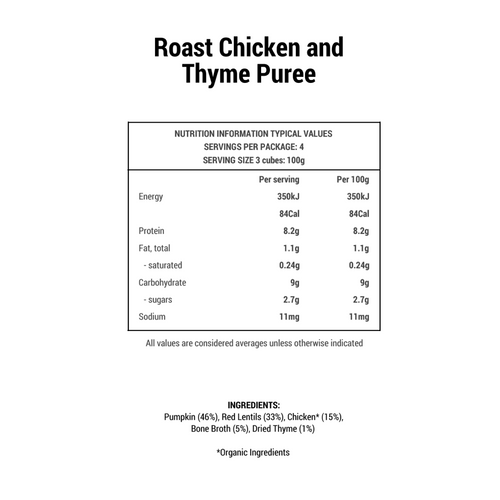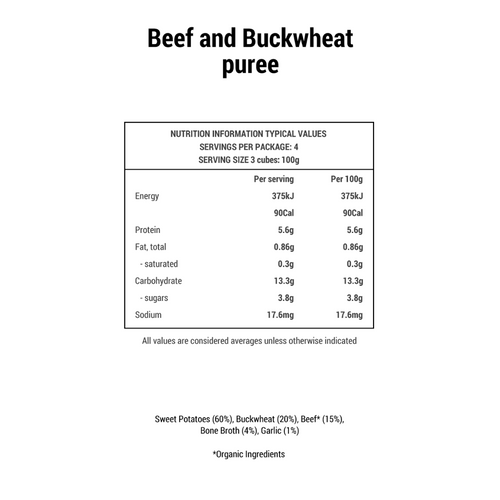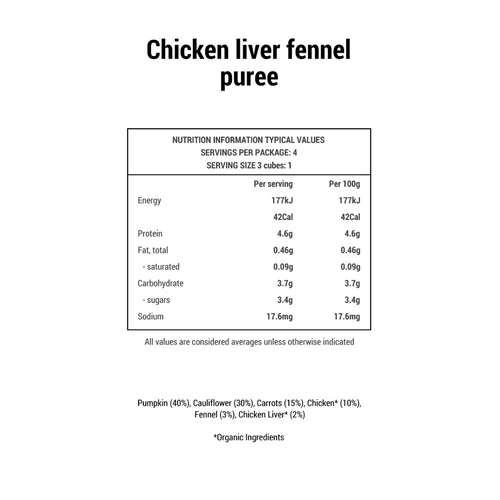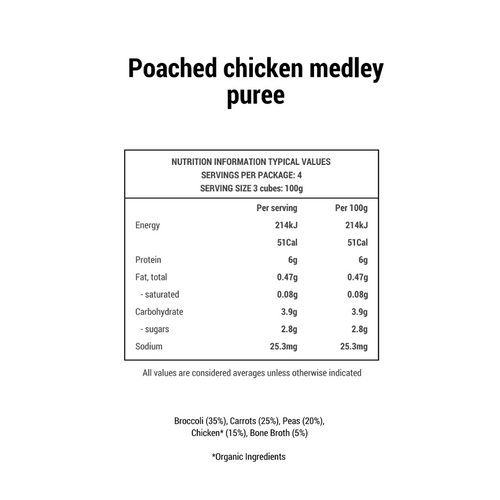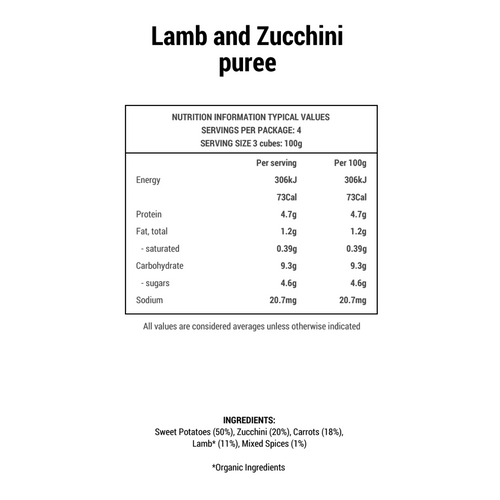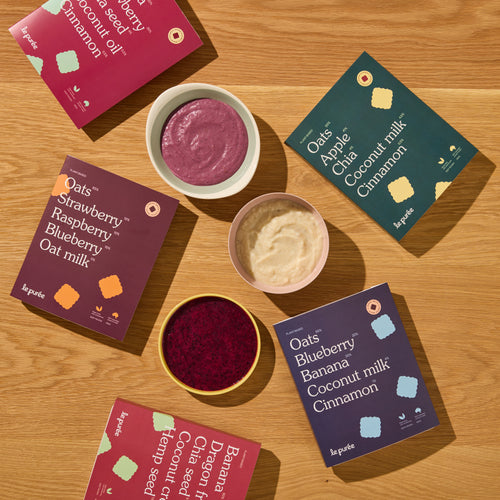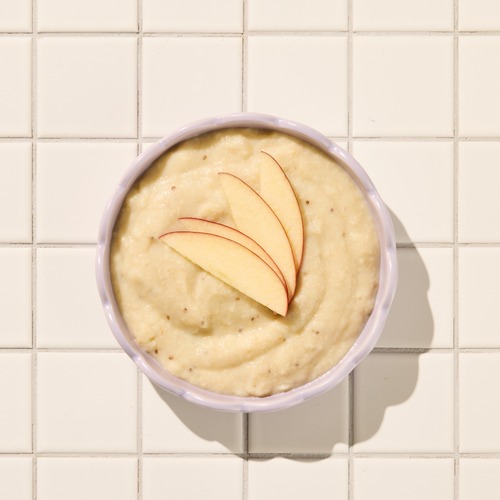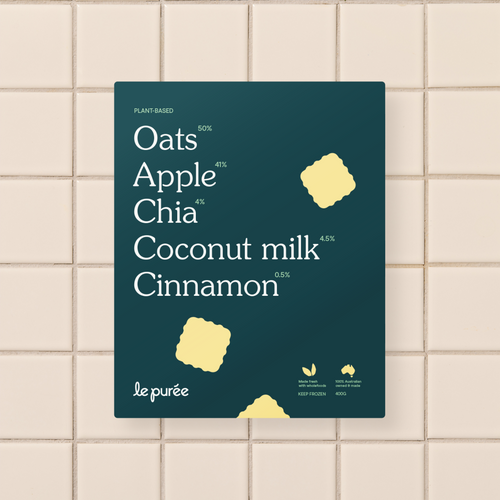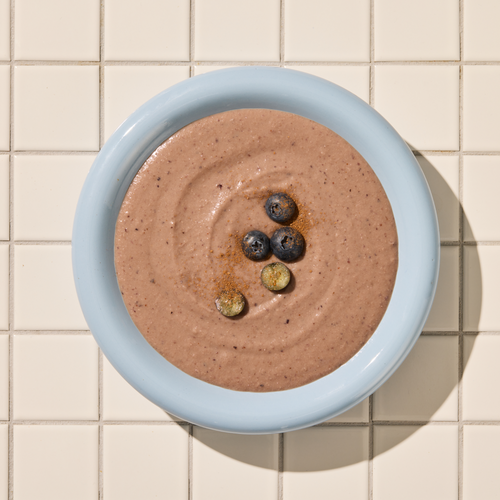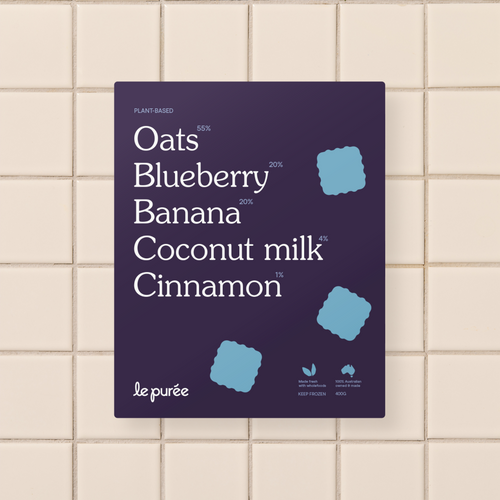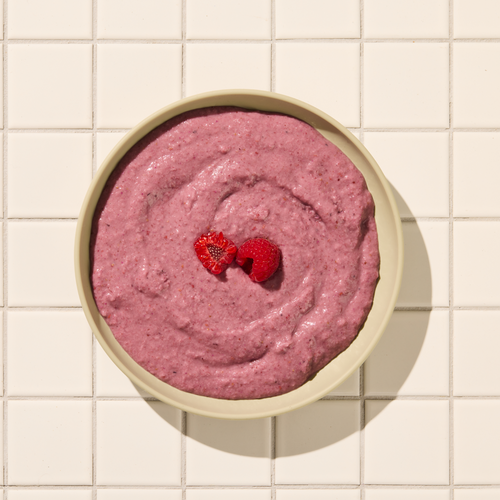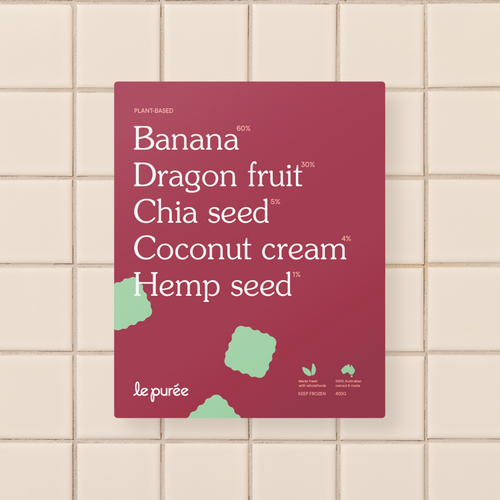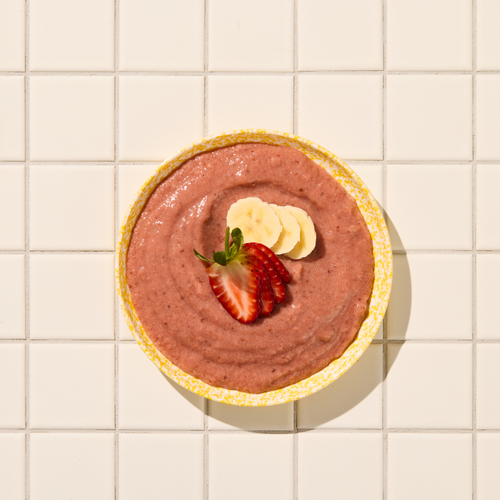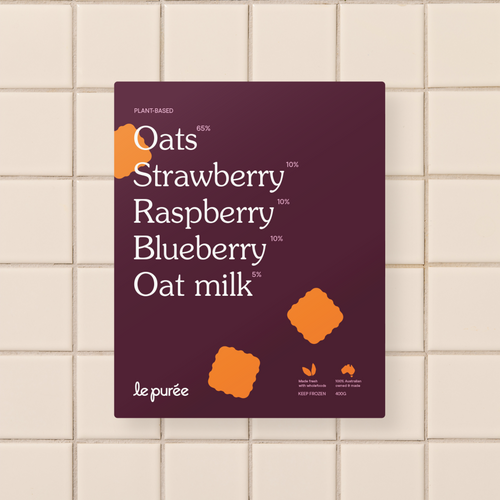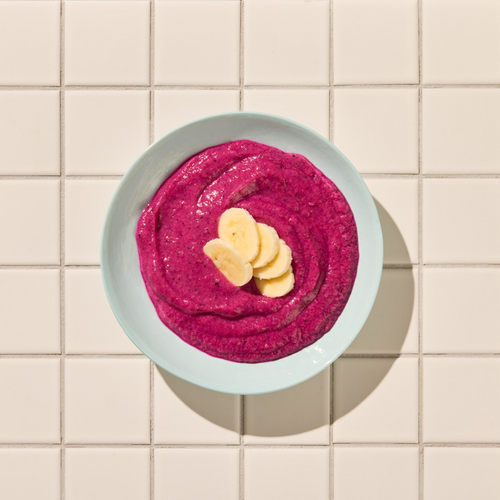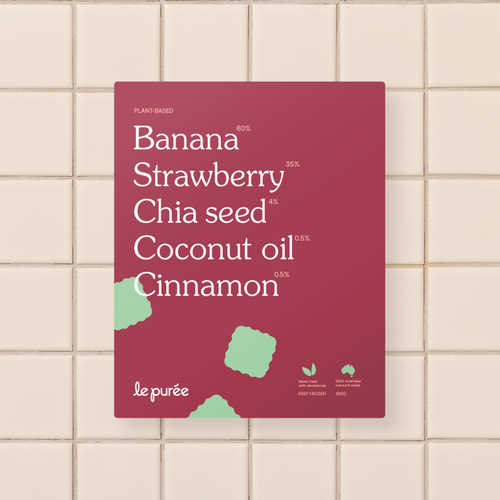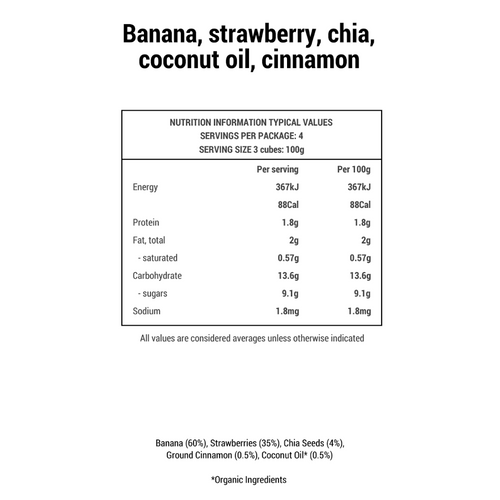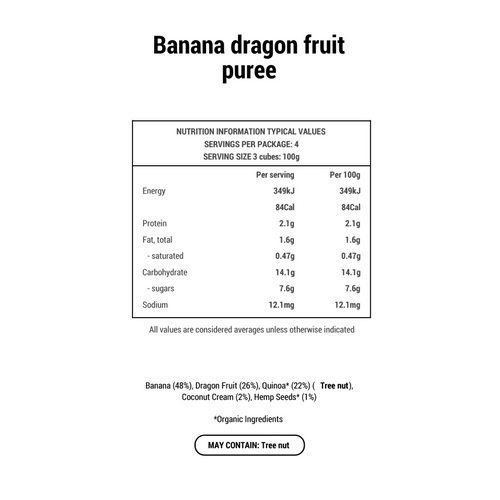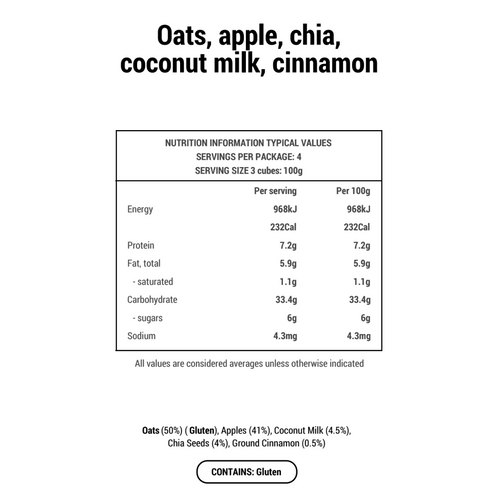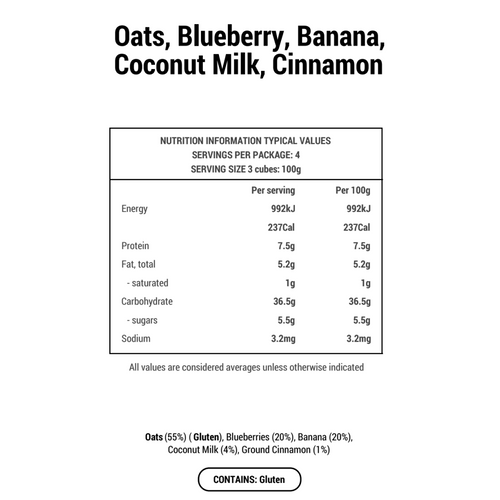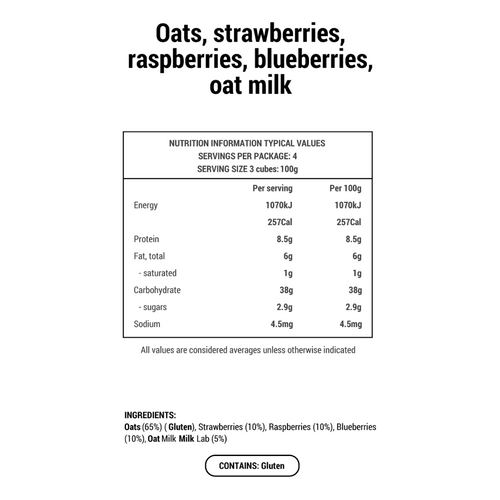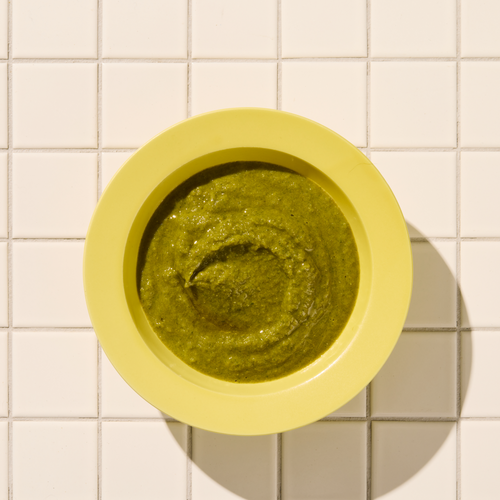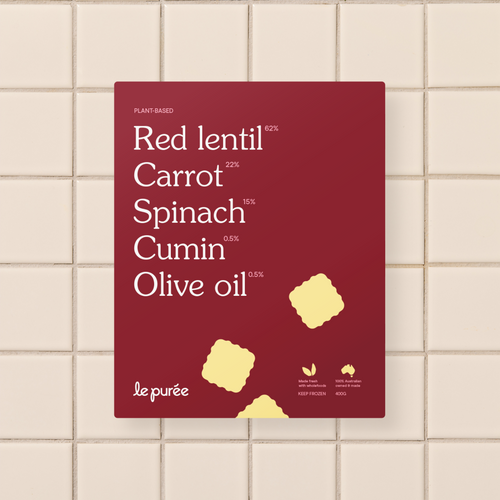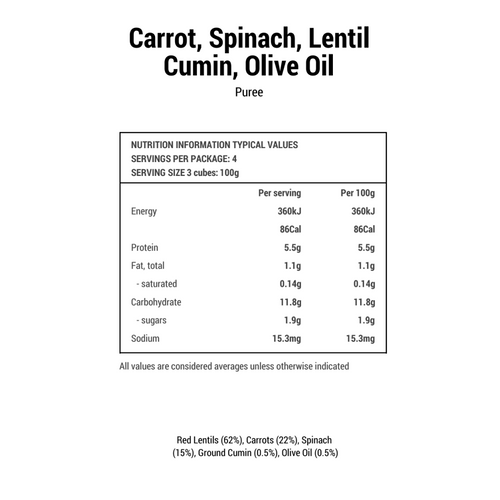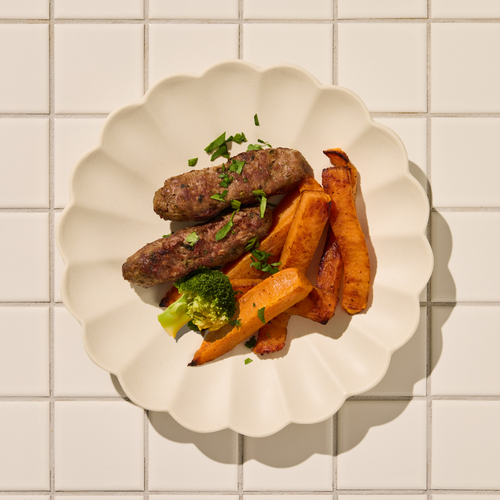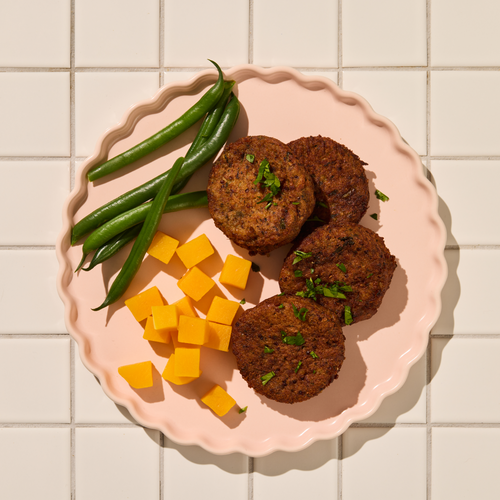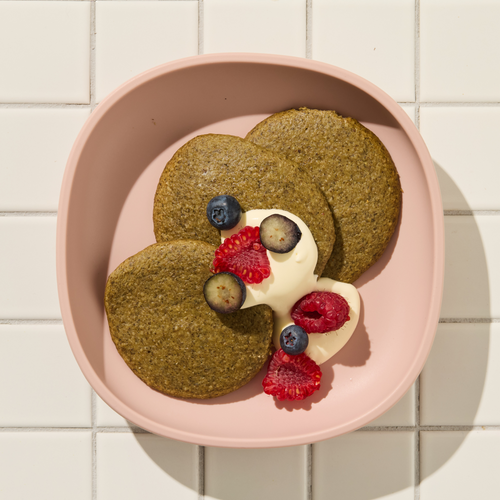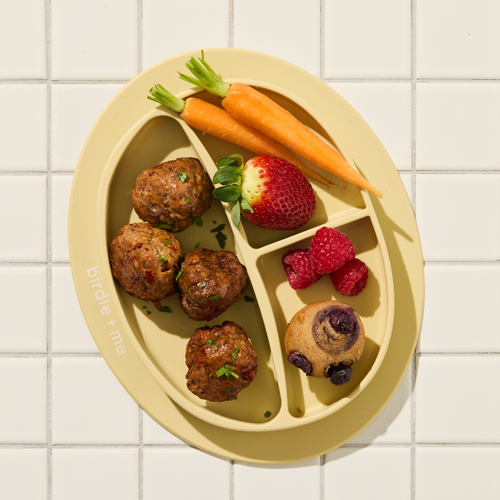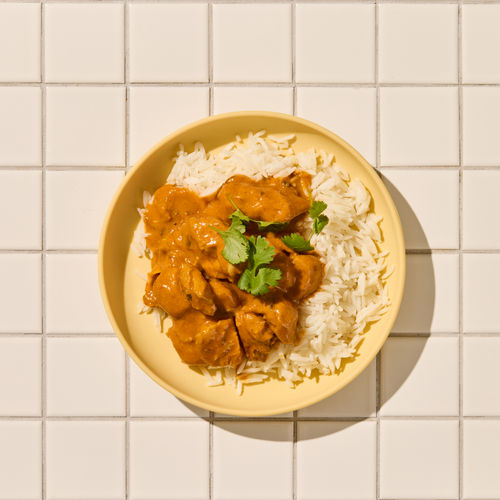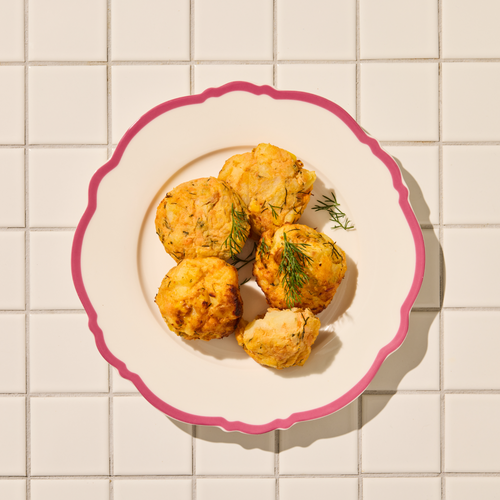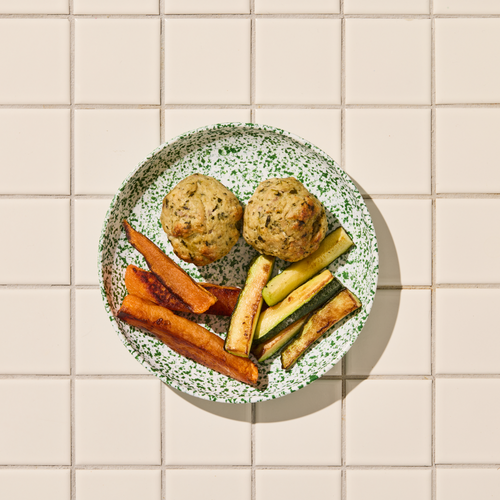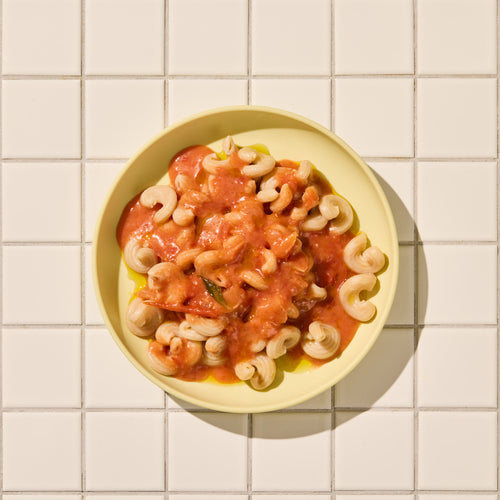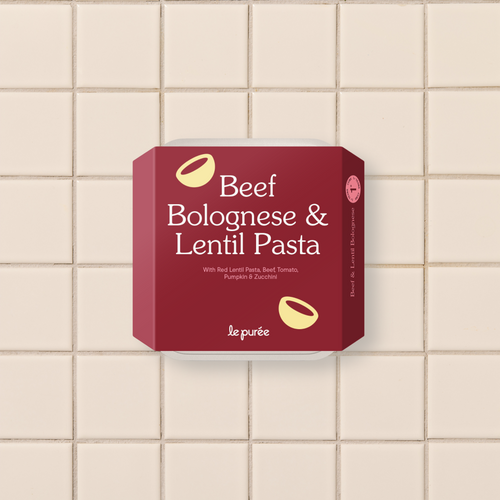Written by: Jessica Kurosaki, Le Puree In-House Dietitian
If you're a parent who's ever googled “how to get more iron into my baby” at 3am, you’re in good company. Most of us know iron is important, especially for babies and toddlers, but what if we told you that one of the easiest tools for increasing iron intake might already be in your kitchen drawer? Yep, we’re talking about that heavy old cast iron pot your grandma swore by. (Grandma was ALWAYS right, huh?!)
Wait... cooking in cast iron pots and pans actually boosts iron? Surprisingly, yes!
When you cook food in cast iron, a small amount of iron leaches from the pan into the food, especially if the food is acidic (think tomato sauce), has a high moisture content or if it cooks for a longer time. Studies have shown that meals prepared in cast iron can have significantly higher iron content, which is great news if you’ve got a little one with growing iron needs.
Iron is essential for healthy brain development and energy levels. Babies are born with a fabulous amount of iron stores, but those stores start to run low by around six months. That’s why iron-rich foods are a key focus once solids are introduced. And while there are plenty of wonderful ways to include iron in a baby’s diet like meat, legumes and iron-fortified grains, adding a cast iron pot into the mix is an easy, passive boost that doesn’t require a single extra ingredient.
PICTURED: Le Puree Meat Bundle
Okay I’m hooked- but what should I cook?
The beauty of cast iron is that it doesn’t play favourites. Whether you’re cooking up a bolognese with beef mince or a lentil and sweet potato stew, cast iron is quietly working in the background to up the iron ante. It’s especially handy for families following plant-based diets, where iron from plant sources (non-haem iron) isn’t absorbed as efficiently by the body.
PICTURED: Le Puree Lamb Kafta
So... any risks?
In most cases, cast iron is very safe, but there are a couple of things to be mindful of. Very high iron intake isn’t usually a concern for children, especially through food. However, in rare cases where a child has a medical condition like haemochromatosis (where the body stores too much iron), it’s best to chat to your GP before making dietary changes.
Also, cast iron pans can be heavy and get incredibly hot, so always keep them well out of reach of curious toddlers and never leave one unattended on the stove!
What about iron particles or “shards”?
It’s a common concern for parents - could iron leaching from the pan be dangerous in some form? The short answer is no. The iron that transfers from a cast iron pan into food is in a microscopic, ionic form, not in solid flakes or shards. When properly maintained, seasoned cast iron doesn’t shed particles that are visible or harmful. Any iron that makes its way into your food is not only safe but beneficial in small, regular amounts. That said, if a pan is rusting or unseasoned and flaking, it’s best to re-season it or replace it to ensure safe cooking.
Top tips to get started
-
Go acidic: Tomato-based recipes are especially good for drawing iron out of the pan and into your food
-
Slow and steady: Longer cook times mean more iron transfer. Stews, curries and soups are perfect
-
Mix it up: Don’t rely on cast iron for every meal, but aim to use it a few times a week
-
Pair it: Vitamin C helps the body absorb plant-based sources of iron more efficiently. Think capsicum, citrus, strawberries to serve alongside your iron fortified cereals and grains.
- Use it early: Cooking up any meals or reheating a Le Puree Bolognese for your little one in a cast iron pot, is just another way to boost their nutrients!
PICTURED: Le Puree Beef Bolognese
Look for uncoated cast iron rather than enamel-coated varieties. It’s the direct contact between food and the raw iron that makes the difference. If you're buying new, look for pans labelled "pre-seasoned" so you're ready to go from day one.
Don’t toss your stainless steel or non-stick pans. It’s just about adding one more helpful, health-promoting tool to your kitchen toolkit. A bit of knowledge, a bit of tradition, and a whole lot of nutrition, all in one pot.
If you’re curious and want to dive into the science behind this, here are some well-regarded studies and reviews:
-
Geerligs, P. D., Brabin, B. J., Omari, A. A. (2003). Food preparation with iron utensils can reduce iron deficiency. The Lancet, 361(9357), 1816.
https://doi.org/10.1016/S0140-6736(03)13402-5
-
Adish, A. A., Esrey, S. A., Gyorkos, T. W., Johns, T., & Yip, R. (1999). Effect of consumption of food cooked in iron pots on iron status and growth of children: a randomised trial. The Lancet, 353(9154), 712–716.
https://doi.org/10.1016/S0140-6736(98)06088-2 -
Borigato, E. V. M., & Martinez, F. E. (1998). Iron nutritional status is improved in Brazilian preterm infants fed food cooked in iron pots. The Journal of Nutrition, 128(5), 855–859.
https://doi.org/10.1093/jn/128.5.855






